I have always been an animal lover, and as my sister has been a hippo parent for many years I was pleased to be able to meet Karen in 2006, at one of her talks in the UK. She really inspired me when she talked about the hippos, the problems with poaching and all the other animals that surround her home situated in the Save Valley Conservancy. Ever since I have hoped to work in animal conservation, and dreamed of experiencing Karen’s life in Zimbabwe.
Since the country is now stable, I was able to spend two months with Karen and her husband Jean-Roger, to get some vital experience with the animals. My sister Kirsty joined me for the first week, and she was thrilled to be able to meet her hippo, Cheeky.
The cottage that we were staying in was separate from the main house, and therefore didn’t have Karen’s twelve cats preying on its permanent inhabitants – several different kinds of lizards and geckos. There was one gecko living in the shower who I saw frequently, and a blue tailed lizard whom I often accidentally startled when it was sunbathing by the window.
The morning of my first day we headed down to meet the hippos. It only took a couple of minutes to walk down to the river through the bush, where there were the remnants of an old water pump overlooking the weir pool which was the home of eleven of the Turgwe hippos, as well as about sixteen crocodiles. When we got there the hippos were in the water, relaxing and keeping cool out of the hot sun. Karen told us the names of all the hippos. Cheeky was easy to spot as she was fairly small for a female and a lighter colour than the others. Kirsty was really excited to be able to meet her. Next to Cheeky was her adorable calf Peaches, the smallest of all the hippos. Kirsty and I kept quiet so as not to disturb the hippos with our voices, but Karen was able to talk to the hippos because they knew her voice. Not only did they stay relaxed but hearing her there helped keep them calm with new people. Being with the hippos was almost meditative.
After a while we were about to leave, when Blackface, the dominant female and Cheeky’s mother, stood up and walked onto the bank, closely followed by her four year old son Five, and then the rest of the pod. It was truly amazing to see them on land, especially as they were only about fifteen metres away. It really made you appreciate how big they are. As we left the hippos said goodbye to us in their hippo laugh.
Back at the house we were visited by a family of about 30 vervet monkeys who lived nearby and regularly dropped in to take advantage of the food. We chopped up some oranges from the orange plantation at Humani Ranch, our nearest neighbours, and then headed out into their midst. The first monkeys to surround us were Dragonlady, the dominant female, Greedy, an aptly named male, and OO8, a baby with a broken tail. Some of the monkeys approached us and politely took the oranges from us, whereas others snatched them, and some weren’t brave enough so we had to throw them the oranges. We did our best to make sure everyone got some.
Next to arrive were the resident troupe of baboons. Like the monkeys, these baboons had learned that Hippos Haven was a good place to come for food, and hung around with us most days. The troop leader was named Spazzy, and the tamest of his family was a highly intelligent young female called Vixen. She had not only learned how to open doors, but knew that once she was in the house to go and open the pantry door to get to the food. Later on during my stay she developed a new habit of going through to the bathroom and looking at herself in the mirror. I maintain that she was more human than baboon. We fed the baboons too, giving them oranges and game nuts, though Spazzy didn’t let any of the others anywhere near his oranges.
We tried to see as much as possible in the first week as Kirsty was there for such a short space of time. We went on many game drives and saw lots of impala, kudu, giraffes, a few zebra and the back end of a white rhino. Whilst walking in the bush we glimpsed waterbuck and bushbuck, and we tried desperately to find elephants, though sadly, due to culling, they were making themselves scarce. On one game drive we went as far as the dry Sabi River and could see the mountains of Mozambique in the distance. Surrounded by a lush green area of the bush, it was a really beautiful sight. As we drove back, Jean spotted something in the distance. After a minute or two of peering through binoculars we could all see the dark grey shape of a lone bull elephant, it wasn’t a great sighting, but we were getting closer.
Most of the week passed and still no luck, until Kirsty’s last day, when we were out walking on the Mokore side of the Turgwe looking for ellies. There had been plenty of spoor but all we had seen were impala drinking from the river, so we turned and headed back. Just then we spotted a herd of about 30 elephants on the hippo island. We headed to where we could see them better, amazed at our luck, and watched them until they had moved out of sight. It was truly amazing to see such huge and majestic animals in the wild, just going peacefully about their lives.
Kirsty and Jean left early the next morning, whilst it was still dark, in order to get to Harare in time for her flight.
Over time the hippos got completely used to me and I was able to talk normally when I was with them without them getting spooked. Soon Karen allowed me to be alone with them, and I could sit and draw in their company. I quickly fell in love with their different characters and Dizzy became my favourite, as she was always playing, gaping and generally showing off, therefore when I looked back I found that a lot of my hippo photos were of her. She was also bolder than the rest of the hippos, and when Karen called her she would come forward, closer than any of the others would dare.
Days were spent divided mostly amongst the hippos, baboons, monkeys, and patrolling the bush in search of snares. We sporadically found some and on one occasion the game scouts returned with a poacher they had found. He had a few snares with him and eventually admitted to setting others. He assisted us in finding and removing the rest of them, though unfortunately one of his snares had already killed a female waterbuck. Another casualty during my stay was a young dassie that had been found snared. One evening after about three weeks I found and removed my first snare, which had been set for a bushbuck, one of the easiest animals to snare.
A constant problem facing the hippos is the worry that they will run out of water, so every time the water level started to get low we took action. The first thing we did was to shovel sand into sacks, which we placed on top of the wall at the end of the weir pool. This then raised the water level as the water flowed from upstream. Unfortunately over time, less and less water reached the pool, so then it was necessary to shovel more sand upstream, blocking channels and increasing the flow. Eventually it became obvious that we had to block every other channel for the hippos to have enough water, which wasn’t possible to do by hand, so we hired a front end loader, which did the job. The hippos were very grateful.
We were lucky enough to be able to spend some time with Dr. Rosemary Groom, a wild dog researcher working with packs in the conservancy. For a few mornings we got up before first light to go with her and Rafael Crespo, her volunteer, to one of the dens and see the dogs. There were two litters of puppies, and the older pups were very curious, coming right up to the car, playing, and just having fun the way all puppies do. One of the dogs, a female yearling, had been snared, and we were able to dart her in order to remove the snare. Unfortunately, after being darted the pack split and we lost her into the bush. We split up and combed the bush in search of her, and after about 45 minutes Karen found her, which wasn’t easy since the dog was designed to be camouflaged.
Karen removed the snare and Rosemary put iodine on the wound. Then she collected data for her research. I helped Rafael to take blood whilst Rosemary took an ear notch and hair samples. Karen was in charge of watching the dog’s temperature and spraying her with water when she got too hot. I then monitored breaths per minute as Rosemary and Rafael took measurements of the dog. When we were finished we noticed that the dog was beginning to stir so we moved away a little bit and waited. After a while she stumbled to her feet and walked away. The next day we saw her back with the rest of the pack, walking normally.
A couple of days later we darted another dog, and luckily this one went to sleep on the spot. After collecting the same data, Rosemary fitted a radio collar so that she could track the dog, along with the rest of the pack. Again, the dog woke up without any problems, and the puppies chased after the car as we drove away.
One of the mornings that we left early to meet Rosemary, after walking a little way we were held up when we spotted a hippo in front of us in our path, little more than a hundred metres away. We froze – it was Bobin. After waiting for him to move along a little, we edged forward, silently as to not give away our presence. We carried on like this until he headed down the bank towards his pool, then we were able to also go down the bank and cross the river. On another occasion I was heading back to Hippo Haven just as it was starting to get dark, and as I climbed up the bank there were fresh hippo footprints in the sand, a sign that Bobin had already started roaming for the night. Luckily there was no sign of him though.
Eventually it became apparent that it wasn’t just the hippos that had accepted me. Having got used to me, Vixen would now let me stroke her, as would one of the young female monkeys, who Karen named Hazel after me. Another of the monkeys, a female called Cheeky, took it upon herself to jump on my shoulder whilst I was distributing oranges, which seeing as how I had been looking in the other direction, did make me jump. One other time she climbed up my leg to take the oranges.
Another awesome experience was our trip to Victoria Falls, made possible by the fact that Rafael and his girlfriend, Kate Eckman of ABC news, had also been hoping to see the Falls. They were a truly beautiful sight, a real triumph of nature, and the rainforest that surrounded them made the atmosphere even more magical. The animals in the area were completely used to people, there were baboons trying to open the bins, and a warthog wandering around. There were also some vervet monkeys, but they weren’t as pretty as those in the Conservancy. I also used the visit to the Falls as an opportunity to bungee jump, something I had been thinking about doing for a while. It was completely surreal, but an amazing experience.
After the Falls we went to Hwange National Park, the biggest national park in Zimbabwe. We started off by driving to a pan and waiting to see what appeared. As we arrived there was a herd of zebras leaving, and we could hear them going off into the distance. The pan was surrounded by vultures, some of them drinking and some of them circling as there was a lion kill nearby. Before too long we noticed that there were four hippos in the water, a bull, two females and a calf. We watched them for a little while, then noticed that approaching us was an ostrich, which none of us had expected to see. He stayed with us for quite some time.
Then we met up with Sharon Pincott, a past volunteer of Karen’s who works with the Presidential herd of elephants at Hwange. She agreed to take us with her to see the elephants, who as long as she was in her car, were all completely at home with her amongst them, and a couple of the females would even let her stroke their tusks and trunks. There were approximately 400 ellies in total, though they were broken down into family groups of around 30. Sharon had given each family group a letter, and then given the members of each family names that began with that initial. We got there as one of the families was leaving, and as they walked past the car, only a few of metres from us, you could see the trust in their eyes. It was an incredible feeling, and saddened me to think that if only people didn’t hurt them, we could have this relationship with so many different animals. We moved on in search of more ellies, and this time a young bull approached us. Sharon recognised a hole in his right ear and told us that he was called Leroy. As he had left his family group to live on his own, Sharon hadn’t seen him for several years, so he was a little wary, but clearly still remembered her. Kate and Rafael threw acacia pods to him, encouraging him to come closer, and soon he was only a couple of metres away. He was a magnificent beast. He moved on and we found another family, complete with tiny calves. We got some brilliant photos.
As we arrived back in the Conservancy we met some elephants, clearly putting in an appearance as they didn’t want to be outdone. For the rest of my time at Hippo Haven we saw or heard them most days, as they stayed around the house. We counted around 45 of them in the herd. One morning we heard them by the hippos, so we went down to have a look, and the herd was on the island. Most of the hippos were trying to be invisible by hiding in the water, but Relief was stood on land, just a few metres away from the matriarch, with only a couple of bushes between them. It was astonishing how small she looked stood next to an elephant; she looked no bigger than a dog in comparison.
On a few occasions people would visit us to come see the hippos. Before they left, Kate, Rafael and the people they were staying with all came for the afternoon. The weather had been strange, which normally meant the hippos disappeared inland, so before they arrived we were getting quite worried that they weren’t going to be there, which had happened before when people had visited. However, when we got to the hippos we saw that most of them were there in the water, and before too long the rest arrived from inland. We then realised that both Bobin and Relief, who normally stayed separate from the other hippos, had joined the group, meaning that there were thirteen hippos in total in the weir pool. The hippos went on to play happily, clearly not bothered by the large number of people. It was perfect.
All in all I loved my time at Hippo Haven, and fell in love with the hippos and Zimbabwe. The experiences I had there have inspired me further and I am now sure that I want to spend my life doing something similar. Since I got back to the UK I have known that I will return to Zimbabwe, if only for the sound of hippos laughing in the night. Karen and Jean-Roger – thank you so much for the time I spent with you, it really was a dream come true.
Hazel Mitchison, Yorkshire U.K, November 2009

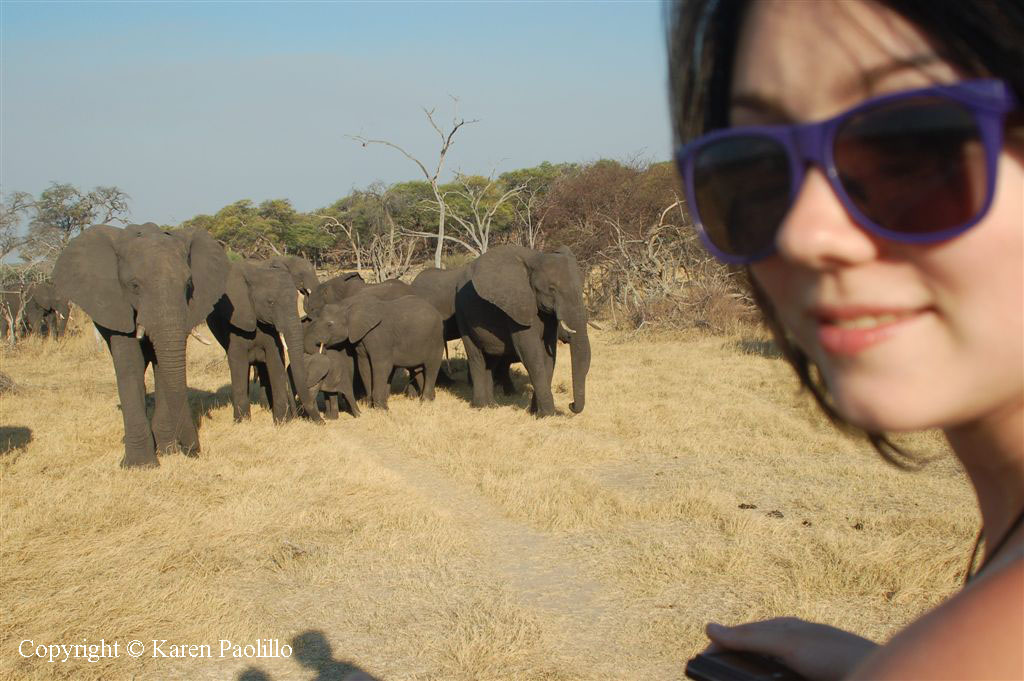
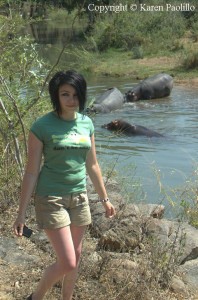
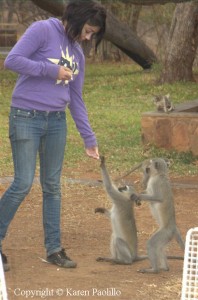
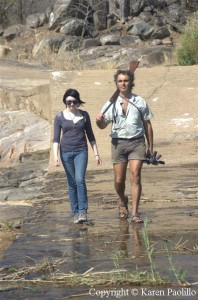
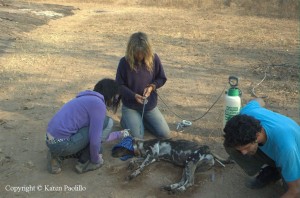
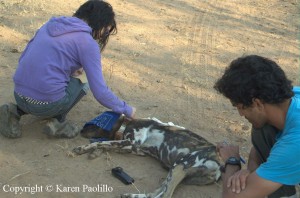
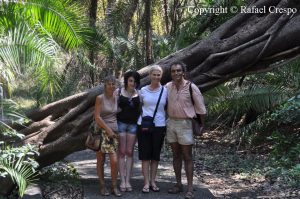
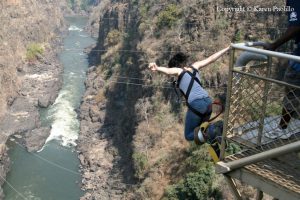
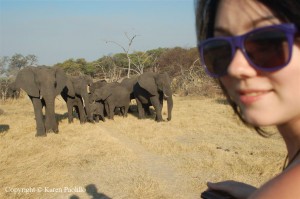
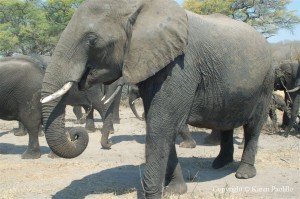
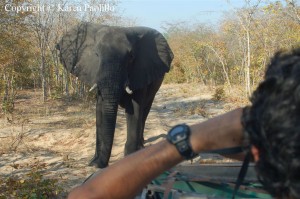
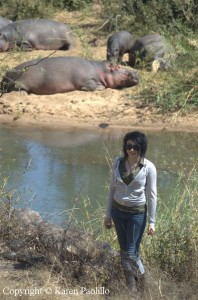

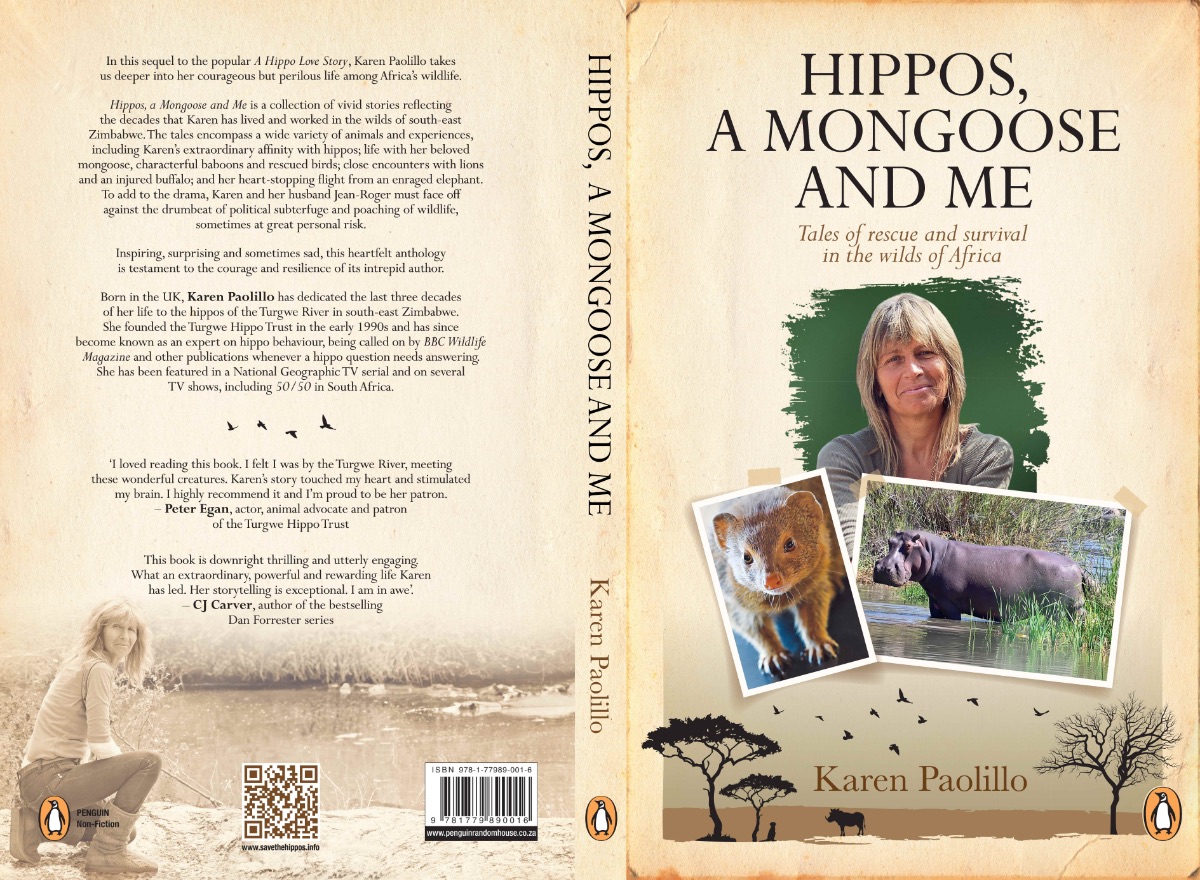
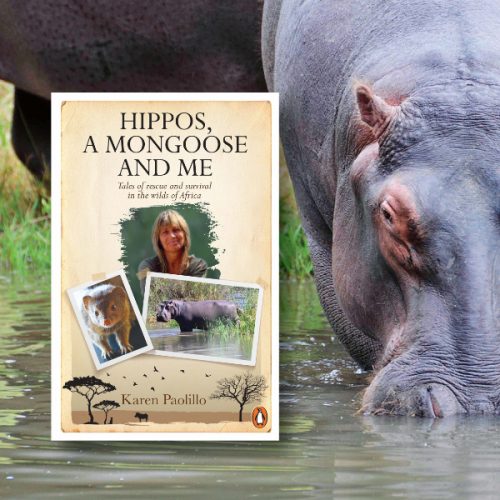
0 Comments